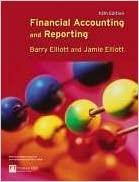Question
Balance Sheet for the Year Ended December 31, 2019(In Millions of Dollars) Cash and marketable securities $ 7.6 Account payable $ 5.7 Accounts receivable 39.6
Balance Sheet for the Year Ended December 31, 2019(In Millions of Dollars)
| Cash and marketable securities | $ | 7.6 | Account payable | $ | 5.7 |
| Accounts receivable |
| 39.6 | Accrual |
| 7.5 |
| Inventory | 9.1 | Notes payable | 1.9 | ||
| Current assets | $ 56.3 | Current Liabilities | $ 15.1 | ||
|
|
|
|
| ||
|
|
|
| Long-term debt |
| 61.2 |
| Net fixed assets |
| 114.5 | Preferred stock |
| 15.0 |
|
|
|
| Common stock | 79.5 | |
| Total assets | 170.8 | Total claims | 170.8 | ||
To begin, Owen reviewed IBTECH's 2019 balance sheet, which is shown in Table 1. Next, she assembled the following data:
- IBTECH's long-term debt consists of 9.5 percent coupon, semiannual payment bonds with fifteen year remaining to maturity. The bonds last traded at a price of $891 per $1,000 par value bond. The bonds are not callable and they are rated BBB.
- The founders have an aversion to short-term debt, so the firm uses such debt only to fund cyclical working capital needs.
- IBTECH' federal-plus-state tax rate is 40 percent.
- The companys preferred stock pays a dividend of $2.50 per quarter and has a par value of $100. It is non-callable and perpetual, and it is traded in over-the-counter market at a current price of $104 per share. A flotation cost of $2 per share would be required on a new issue of preferred stock.
- The firm's last dividend (D0) was $1.09, and dividends are expected to grow at about a 10 percent rate in the foreseeable future. Some analyst expect the company' recent growth rate to continue, other expect it to go to zero as new competition enter the market, but the majority anticipate that a growth rate of about 10 percent will continue indefinitely.
- An important minority of analyst have noted that over the last few years, the company has had a 14 percent average return on equity (ROE) and has paid out about 25 percent of its net income as dividends. They believe the firm' expected future growth rate, g should be based on this information and used to estimate the cost of capital.
- The firm's per share dividend payment over the past five year has been a follow
| Year | Dividend |
| 2015 | 0.72 |
| 2016 | 0.75 |
| 2017 | 0.85 |
| 2018 | 1.00 |
| 2019 | 1.09 |
- IBTECHs common stock now sells at a price of about $25 per share. The company has 5 million common shares outstanding.
- The current yield on long-term T-bonds is 8 percent, and a prominent investment-banking firm has recently estimated that the market risk premium is six percentage points over Treasury bond. The firm' historical beta, as measured by several analysts who follow the stock, is 1.2.
- The required rate of return on an average (A-rated) company's long-term debt is 10 percent.
- IBTECH is forecasting reinvested earnings of $1,800,000 and depreciation of 4,500,000 for the coming year.
- IBTECH's investment banker believes that a new common tack issue would involve total flotation costs - including underwriting costs, market pressure from increased supply, and market pressure from negative signaling effect- of 30 percent.
- The market value target capital structure call for 30 percent long-term debt, 10 percent preferred stock, and 60 percent common stock.
Now assume that you were recently hired as Julie Owens assistant, and she has given you the task of helping her develop the firm's cost of capital. You will also have to meet with Gary Hayes and, possibly, with the president and the full board of directors (including the Kean University Professor) to answer any question they might have. With this in mind, Owens wrote up the following questions to get you started with your analysis. Answer them, but keep in mind that you could be asked further questions about your answer, so be sure you understand the logic behind any formula or calculation you use. In particular, be aware of potential conceptual or empirical problems that might exist. After calculating the Marginal Cost of Capital, the financial vice president of Illinois Bio Technologies (IBTECH) asks Julie Owens, IBTECH's treasurer, to determinate the optimal capital budget for the coming year. Different units, across the company, have presented the following projects:
| Project | Cost | MIRR |
| A | 600 | 14.00% |
| B | 800 | 13.00% |
| C | 800 | 16.50% |
| D | 550 | 14.57% |
| E | 750 | 15.75% |
| F | 400 | 12.00% |
- What is the main advantage of using MIRR (instead of IRR) in the calculation of Optimal Capital Budget? (Hint: remember that IBTECH has two divisions, one with high business risk and other with low business risk)
- Graph the Marginal Cost of Capital (see question 10) along with the Investment Opportunity Set (IOS).
- What is the optimal Capital Budget?
- Which projects should be accepted and which ones should be rejected? Explain
Step by Step Solution
There are 3 Steps involved in it
Step: 1

Get Instant Access to Expert-Tailored Solutions
See step-by-step solutions with expert insights and AI powered tools for academic success
Step: 2

Step: 3

Ace Your Homework with AI
Get the answers you need in no time with our AI-driven, step-by-step assistance
Get Started


